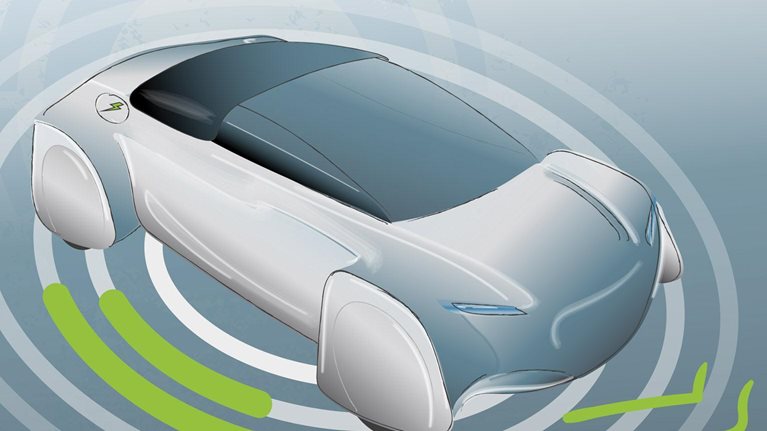While the prospect of completely autonomous, driverless cars continues to grab headlines globally, a quiet revolution is already fundamentally altering our vehicles. The availability and sophistication of new automotive-safety systems, collectively known as advanced driver-assistance systems (ADAS), have been changing how cars are operated and experienced. More and more vehicles already boast features that assist drivers and eliminate errors, including blind-spot and lane-departure warning systems, automatic emergency braking, lane-change assistance, drowsiness alerts, and bird’s-eye displays.
Ultimately, the proliferation of these features could provide a route to (semi-)autonomous cars—and even help prepare vehicles for a fully autonomous world.1 Yet our research finds that to capture the ADAS opportunity fully, car manufacturers and car dealers must explain the systems’ features more actively, carefully define and satisfy customer preferences, and price the technology appropriately, on customer value. Companies that do this well are likely to be strongly positioned to capture additional economic benefits, drive brand differentiation, and advance toward the deployment of even more autonomous or semi-autonomous vehicles.
These perspectives are based on our 2015 survey of 5,500 recent car buyers across China, Germany, Japan, South Korea, and the United States. We found that few consumers had adopted ADAS features, which remain optional rather than standard on many vehicles. While about 70 percent of car buyers were aware of ADAS features, often less than 30 percent had tried or experienced them, and of those who had, about half bought them. Critically, those customers who purchased ADAS components were overwhelmingly satisfied (exhibit).

We identified at least a couple of factors that favor greater ADAS adoption. First, falling prices may provide a tailwind: in four of the five countries we surveyed, price was the top factor cited in the consideration of ADAS purchases. This suggests huge latent demand if individuals can try—and buy—ADAS technologies. The second factor is the importance of safety to drivers and their increasing awareness of the technologies’ capabilities. Drivers consistently value improved vehicle safety, so the technologies can be—and are—a point of differentiation among carmakers and over time may become a “table stakes” factor, making ADAS a likely critical trend for carmakers to embrace.

Would you like to learn more about our Automotive & Assembly Practice?
So what do consumers’ attitudes toward ADAS mean for car and component manufacturers and dealers? We see a few immediate implications:
- To drive ADAS sales, educate customers. Dealers must better inform prospective customers about ADAS features. For example, they could provide a simulated environment to experience the systems’ benefits. They also might offer free trial periods for certain features where the necessary hardware is already fitted to the car.
- Use price as a differentiator. To increase adoption by lowering prices, some manufacturers could place bets on certain ADAS features, installing them on a majority of cars sold, so they can leverage economies of scale and standardization. This will not be a universal solution; other carmakers may choose to sustain high prices, consistent with a premium positioning.
- Create segment-specific ADAS offerings. Manufacturers should make sure that vehicles sold within different countries match drivers’ wants. They might tailor selected ADAS offerings to targeted consumer segments.
- Ensure that over-the-air updates are deployed in a way that keeps ADAS features fresh. This is likely to be particularly important in the future as learning effects allow companies to use the same set of sensors to achieve more and more sophisticated outcomes through intelligent and continually improving software algorithms. Profiting from these updates will be important to reward innovation.
- Treat cybersecurity as table stakes to ensure that ADAS updates are delivered without any concerns. Manufacturers and dealers must guarantee that customers have transparency about data use and privacy, make sure clear action plans are in place to deal with breaches, and invest significantly to prevent avoidable leakage of customers’ car data.
- Offer infotainment features that match ADAS capabilities. In fact, carmakers should consider a more synchronized ADAS-and-infotainment product strategy, so drivers can take full advantage of the safety technology installed on or available in their vehicles. An example would be building relevant ADAS information into the infotainment system to create a more effective and seamless human–machine interface.
ADAS components deliver high satisfaction to drivers and, as those components mature, will lead more and more to semi-autonomous and even autonomous vehicles. Fully benefiting from ADAS technology will require a radical rethinking of current approaches, particularly toward communicating value to customers and ensuring that it is delivered in a manner consistent with local or consumer-segment preferences and overarching desires for data privacy and security. Carmakers, auto suppliers, and dealers that master these complex and at times competing requirements will position themselves appropriately to benefit from the trend toward vehicle automation.


